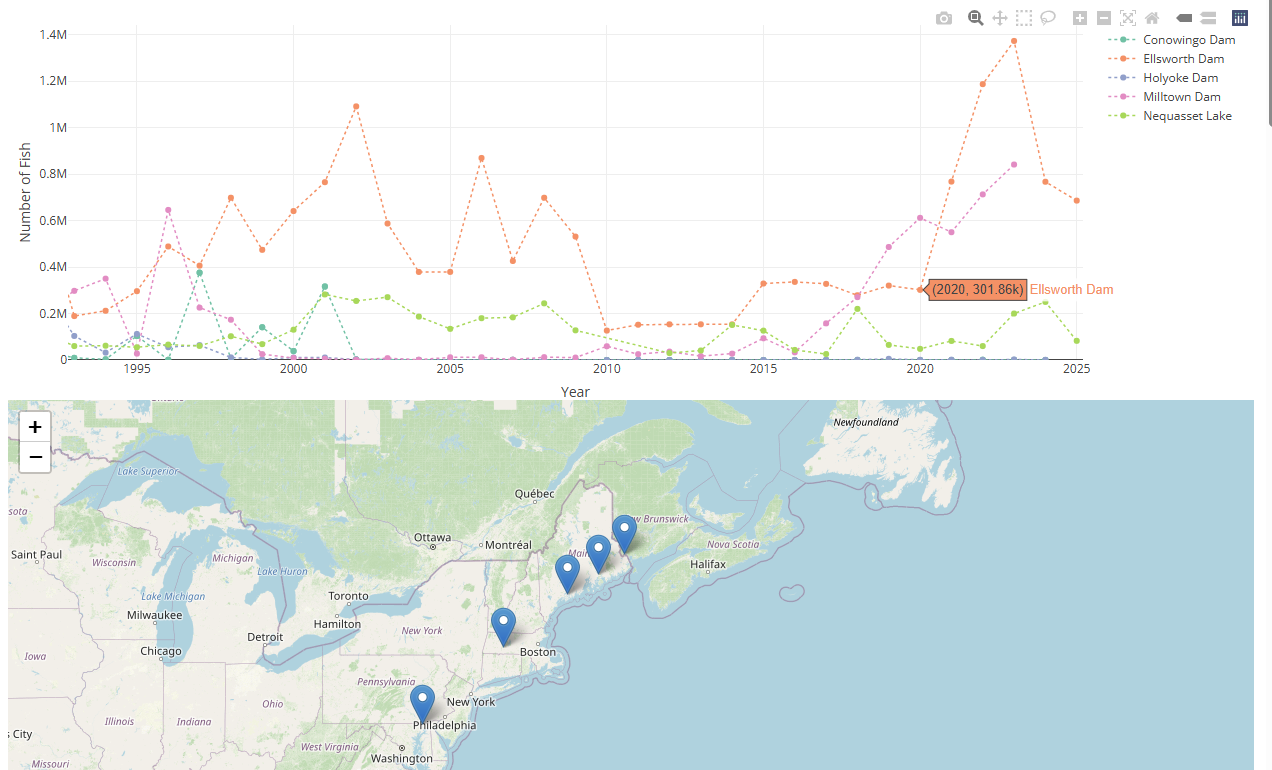
Run Counts
River Herring Counts
River herring runs are counted using a variety of methods, including volunteer visual counts, electronic or acoustic counters, and video counts. Runs are monitored collaboratively by a range of different people including harvesters, community volunteers, alewife committees, local land trusts, tribal governments, researchers, hydropower companies, and the state. Counting river herring as they return to freshwater ponds and lakes to spawn is important to understanding the sustainability of the population, and the response to river restoration efforts. Volunteer run counts also help build local stewardship, and engage and educate the public about river herring and their local ecosystem.
Emily Farr, visually counting alewife at Highland Lake.
Kathy Lymburner of Brooksville takes a scale sample of an alewife.
Monitoring for harvest
In order to restore a river herring run for commercial harvest, fish counts and scale samples (to determine age) must be collected for ten years and meet the following criteria: 235 fish per acre, 20% of the fish must be repeat spawners, at least one fish in each age class (ages three through seven years old inclusive), and a mortality rate of less than one. This information is provided to the Maine Department of Marine Resources, who determines whether the run has a sustainable population and a healthy age structure before it can be harvested.
Local communities and harvesters play a critical role in monitoring river herring runs. In runs that are actively harvested, the commercial harvester maintains and monitors upstream and downstream passage, and collects scale samples to send to DMR. This local stewardship is fundamental to maintaining the health of river herring populations. In fact, according to Maine’s Sustainable Fisheries Management Plan for river herring, “in municipalities which do not exercise their right to fish, river herring returns typically remain below expectations.”
Fish Monitoring Methods
Visual Counting: Volunteers stand at a bottleneck in the stream and count the fish they see, keeping track with a handheld clicker device. Fish are counted for set periods of time and the total run is estimated by extrapolating the counts over the duration of the run.
Electronic Fish Counting: An apparatus made of electrified PVC tubes detects and counts fish as they pass through. The system requires maintenance to prevent pipes from clogging and to ensure proper operation. Electronic fish counting has been used on the Pennamaquan River.
Video Counting: Video cameras record fish passing upstream. Volunteers count fish in timed segments of the video footage. Video cameras are in use on Patten Stream and at Pokey Dam on the East Machias.
Handheld clickers are used to visually count fish.
ECOFish: Shad and River Herring Run Data Portal
This interactive platform hosts adult return data from river herring and shad runs across the East Coast. It is not intended to be comprehensive, and many runs are not included. Anyone with data is invited to upload it to the platform on the “Upload Data” tab.
Other Sources of Count Data
MA DMF river herring counts - https://www.mass.gov/info-details/2021-massachusetts-river-herring-counts
ME DMR publicly available river herring count data - https://www.maine.gov/dmr/science-research/searun/programs/trapcounts.html
KELT Nequasset Dam count - https://www.kennebecestuary.org/fish-count-results




